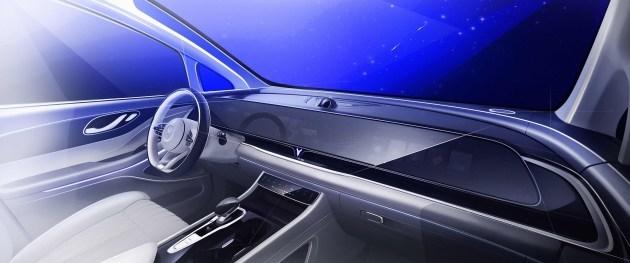Following the release of the Four-seater version of the Lantu Dreamer at the Guangzhou Auto Show, e-Car News recently released the interior design drawing of the Seven-seater Version of the Lantu Dreamer. As the second mass production model created by the Lantu brand, the new model is expected to be launched in the second half of the year.

Judging from the interior design drawings released, the lantu dreamer seven-seater version adopts a seven-seat layout design of 2+2+3, of which the second row is a separate seat. Officials say the second row of seats adds adjustable leg rests and a small table to accommodate objects to meet the needs of rear seat occupants for more comfort. In addition to the seven-seat version, the four-seat version was also officially displayed at the Guangzhou Auto Show.
In terms of styling, Lantu Dreamer continues the family design language, the front face continues to use a straight waterfall grille with a folded angle, and the LED light strip through the front of the car will be lit up at the same time as the LOGO located at the front of the car, improving the recognition of the front face. The rear of the car adopts the classic boxy shape of the MPV model, and the tail light group has a good recognition after it is lit.
The Lantu Dreamer also adopts a family interior design, the center console adopts a T-shaped symmetrical design, and the application of a large number of flat lines expands the visual width and makes the carriage look more spatial. In addition, the car adopts a three-screen design that attracts attention and can be lifted and lowered, and the LCD instrument, the central control screen and the co-driver entertainment screen are integrated, and the height can be lifted and lowered as a whole.
In terms of body size, the new car is 5315*1980*1810mm in length, width and height, and wheelbase is 3200mm. In the power part, based on ESSA's native intelligent electric architecture, Lantu Dreamer provides pure electric and extended range hybrid two power forms, and is equipped with L2+ intelligent driver assistance system to support the vehicle OTA. The official acceleration time of 100 kilometers is 5.9s.